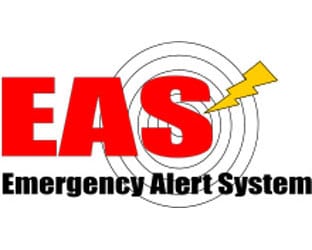The NAB on Friday filed comments with the FCC regarding a proposal to extend the Emergency Alert System to the Internet — including through streaming services. Congress is requesting a study of the issue.
But, the NAB cautions that updating EAS to enable internet alerts would be too complex, and likely infeasible, at this time.
Whether that is conjecture or a confirmed fact is perhaps up to debate. And, given the comments come on behalf of the biggest lobbying voice for broadcast media, there’s likely a tinge of defending radio and TV’s most important “go-to-now!” emergency traits before Congress.
That said, the concept of bringing EAS alerts to those streaming audio or video is clever, and likely one of concern for the American public.
Is it worth the investment in both time and dollars?
The NAB appreciates the Commission’s “forward-looking consideration of how EAS alerts may be disseminated through the internet,” consistent with legislation passed in this fiscal year. “The public interest benefits of expanded access to EAS alerts via internet services are plain, and we applaud Congress for requesting a study of this question,” the NAB’s top legal counsel say. “However, at least for the time being, certain technical challenges and open policy questions make it extremely burdensome, and likely infeasible, to update the EAS system to enable alerts to consumers provided through the internet.”
Before explaining why it would be so difficult, the NAB attorneys took the approach of demonstrating how broadcast radio and TV have a key role as “first informers” and are “essential service providers.” This empowers broadcast media to access disaster areas, the NAB says.
This led the NAB to illustrate the “reliability” of the EAS today, given how local radio and television stations “diligently implemented the ability to receive alerts from FEMA’s Integrated Public Alert & Warning System (IPAWS), routinely test and upgrade their
EAS equipment as needed and take other steps — both voluntary and mandated — to
support EAS, and at their own expense. In addition, broadcasters are often the leaders (and in some cases the only engaged members) of their State Emergency Coordinating Committees.’
The NAB and individual broadcast companies also partner with the FCC and FEMA on various emergency-related initiatives and advisory groups intended to further
improve public alerting.
Today, to the broadcast media lobbying group’s knowledge, there are no pure-play independent streaming services that participate in EAS. Furthermore, the only online audio outlets that may retransmit EAS messages are websites and apps while simulcasting radio stations, and similar online video outlets while simulcasting local television news programming, as well as over-the-top (OTT) services that livestream local television channels.
Yet, wouldn’t it be prudent if Netflix, Hulu or similar over-the-top services offered EAS messaging?
To be clear, any on-demand service would be, today, technically impossible to integrate into EAS. Pure-play content streamers, in the NAB’s view, are not “well-positioned to participate in the existing EAS ecosystem” for live streaming feeds or on-demand content.
Here’s why, as the NAB sees it: “With respect to ingesting EAS alerts, the FCC states that
streaming services’ ‘large geographic service areas’ presents a monitoring challenge. Of
course, ‘large’ does not begin to describe the reach of a cloud-based service which is
available everywhere access to the internet is available. Video and audio streaming services
routinely have thousands or even millions of customers worldwide. NAB understands that the current web-based design and architecture of online streaming services does not typically incorporate or even contemplate any localized infrastructure that would enable a streaming service to monitor for EAS alerts based on either geography or the type of event.”
But, isn’t geotargeting and addressability the hallmark of digital media — and couldn’t Netflix easily incorporate EAS alerts using this granular data?
The NAB isn’t convinced of such a possibility, at least in the near-term.
The broadcast lobby also claims that streamers “simply lack the infrastructure and local presence to monitor other EAS Participants or alert originators for EAS messages.”
As Spotify inches closer to radio-like services, having recently hired veteran Los Angeles programming executive Kevin Weatherly, this could also change given the right technological advancements it wishes to invest in.
The NAB is steadfast in offering a “don’t count on it”-styled response to such suggestions.
“Even if such a mechanism could be created, requiring streaming services to somehow monitor, manage and prioritize all EAS alerts from the thousands of sources in every municipality (or EAS operational area) across the entire country would be extremely problematic,” the NAB said, adding that it also dismisses the belief that creating a process for streaming services to differentiate between market areas they serve when determining what kinds of EAS alerts to monitor, even with advice from state and local government officials, would help solve this problem.
Then, there’s the scenario of a Florida-based family watching a local newscast live on a streaming app — only the newscast is from a California-based TV station. “This could lead to dangerous confusion” if an EAS alert came on, the NAB says.
That said, the viewer could likely realize that, if locales in California were mentioned, they would be thousands of miles outside of harm’s way.
With Rick Kaplan and Larry Walke signing off on the NAB petition, the association concludes, “In light of all these challenges, NAB urges the Commission to report to Congress that EAS should not be extended to internet-based services at this time.”
It’s now up to legislators on Capitol Hill to judge for themselves if the NAB’s efforts have merit, or are simply crafted to defend one of the most valuable traits of over-the-air media — owned by companies whose revenues have been battered by digital entities.





